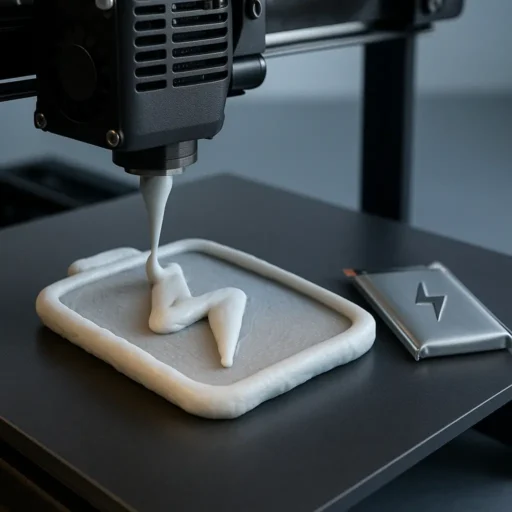Researchers at Linköping University have developed an entirely new kind of battery that can be 3D printed into virtually any shape or geometry.
Featuring a toothpaste-like texture, the team’s soft, malleable, electrode-loaded material can be fed into a 3D printer and deposited into unique tailored designs. In future, their invention could allow for the creation of next-generation batteries that perfectly conform to the outer shells of consumer electronics, whether it be smartphones, smartwatches, tablets, or laptops.
“Batteries are the largest component of all electronics,” explains Aiman Rahmanudin, an assistant professor at Linköping University. “Today they are solid and quite bulky. But with a soft and conformable battery, there are no design limitations. It can be integrated into electronics in a completely different way and adapted to the user.”
The project researchers say that smart gadgets may be taking over, but they’re still limited by conventional batteries, which constrain designs and require users to keep an eye on charge.
To get around these issues, they’ve come up with a soft liquid battery made from conductive plastics and lignin – a byproduct of paper production. While stretchable, high-capacity batteries have already been attempted, they tend to have been limited by electrode thickness. It’s often the case that rare earth materials are also used in their production, limiting their sustainability.
By contrast, the team’s liquid electrode formulation is bio-based, stretchable to double its length, and it can be recharged and discharged up to 500 times without any dip in performance.
“Since the materials in the battery are conjugated polymers and lignin, the raw materials are abundant,” adds study co-leader Mohsen Mohammadi. “By repurposing a byproduct like lignin into a high value commodity such as a battery material we contribute to a more circular model. So, it’s a sustainable alternative.”
Moving forward, the researchers still have a lot of work to do on improving the electrical voltage of their novel battery, but they’ve got all the energy needed to make the project a success!
Find out more about battery 3D printing or read the team’s full research paper here.






